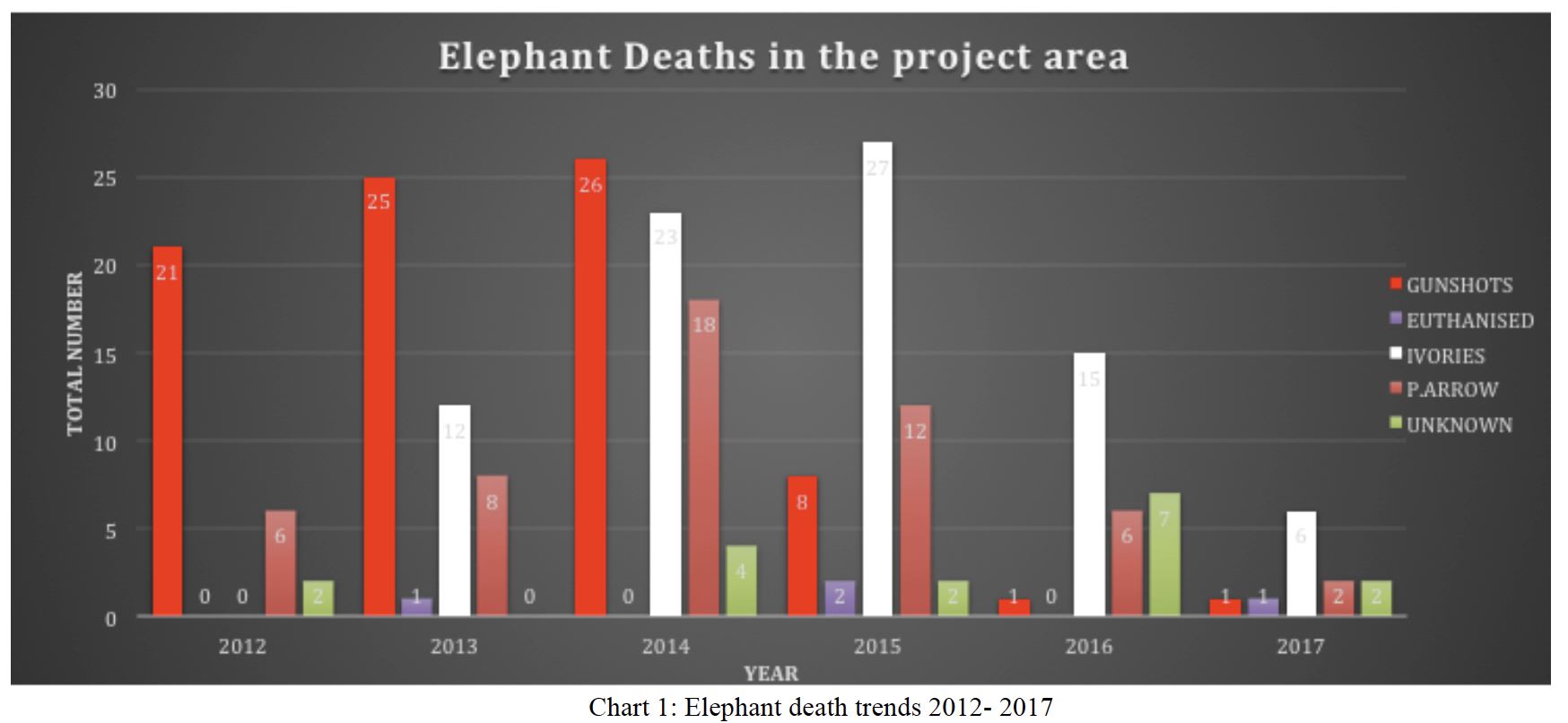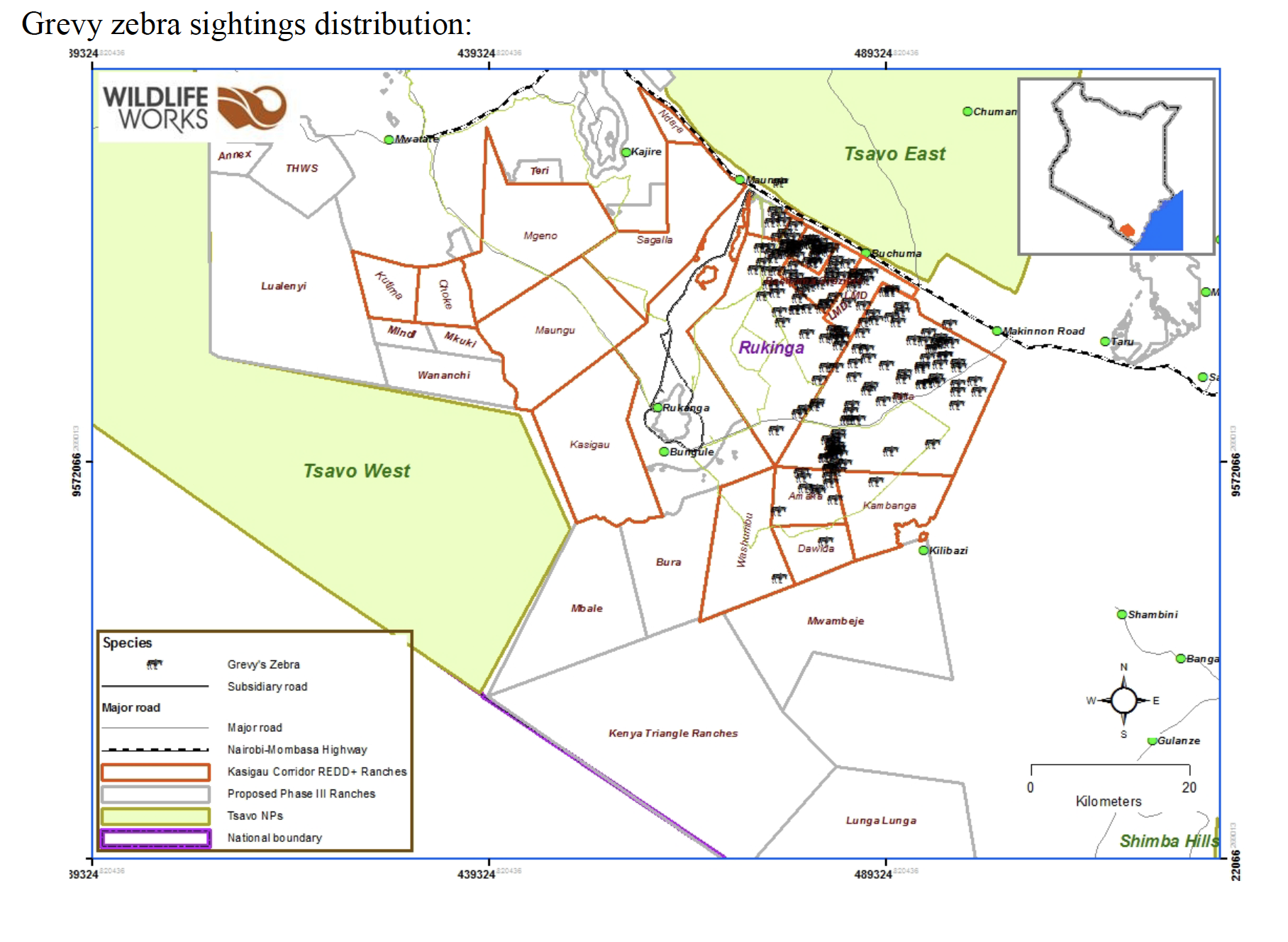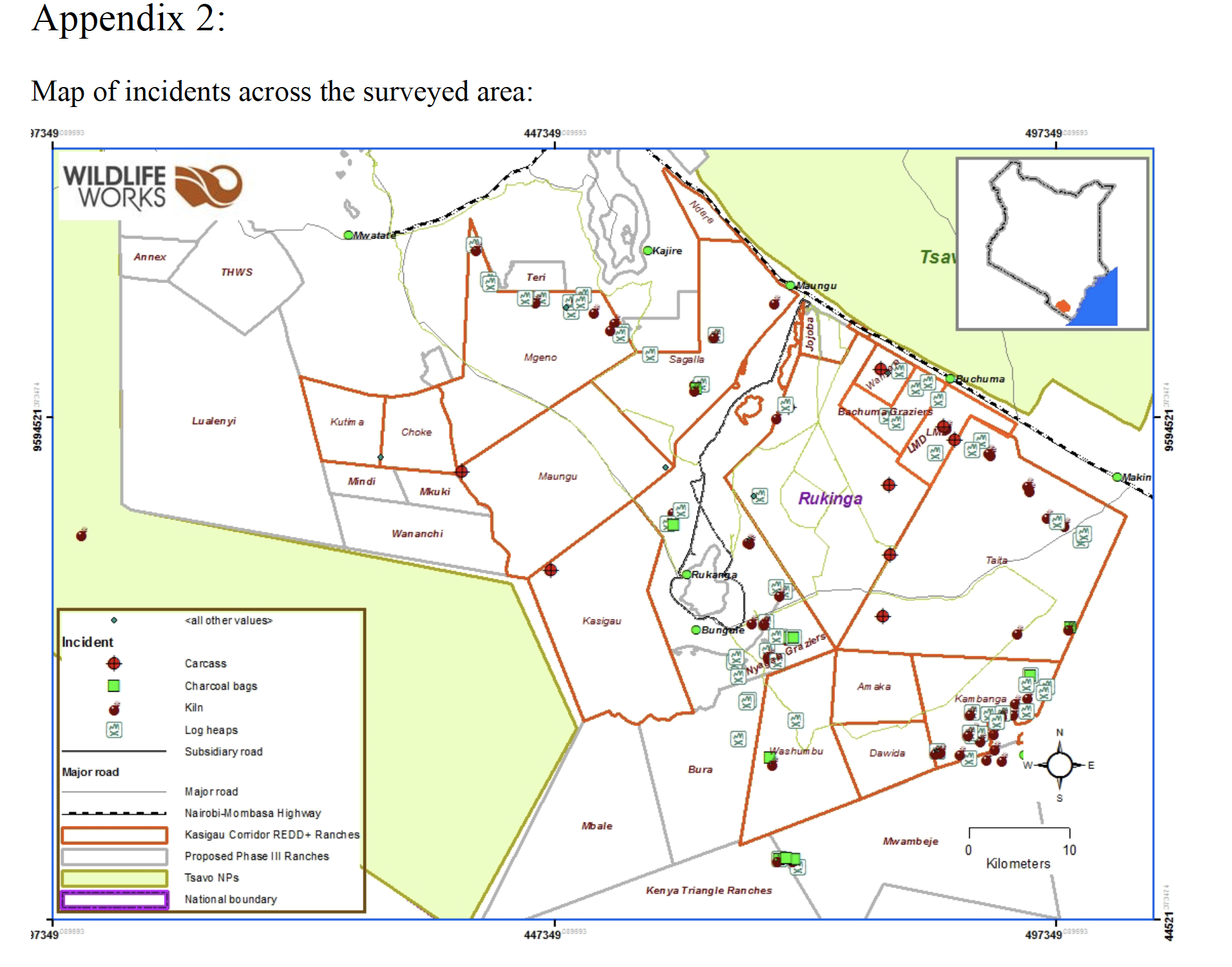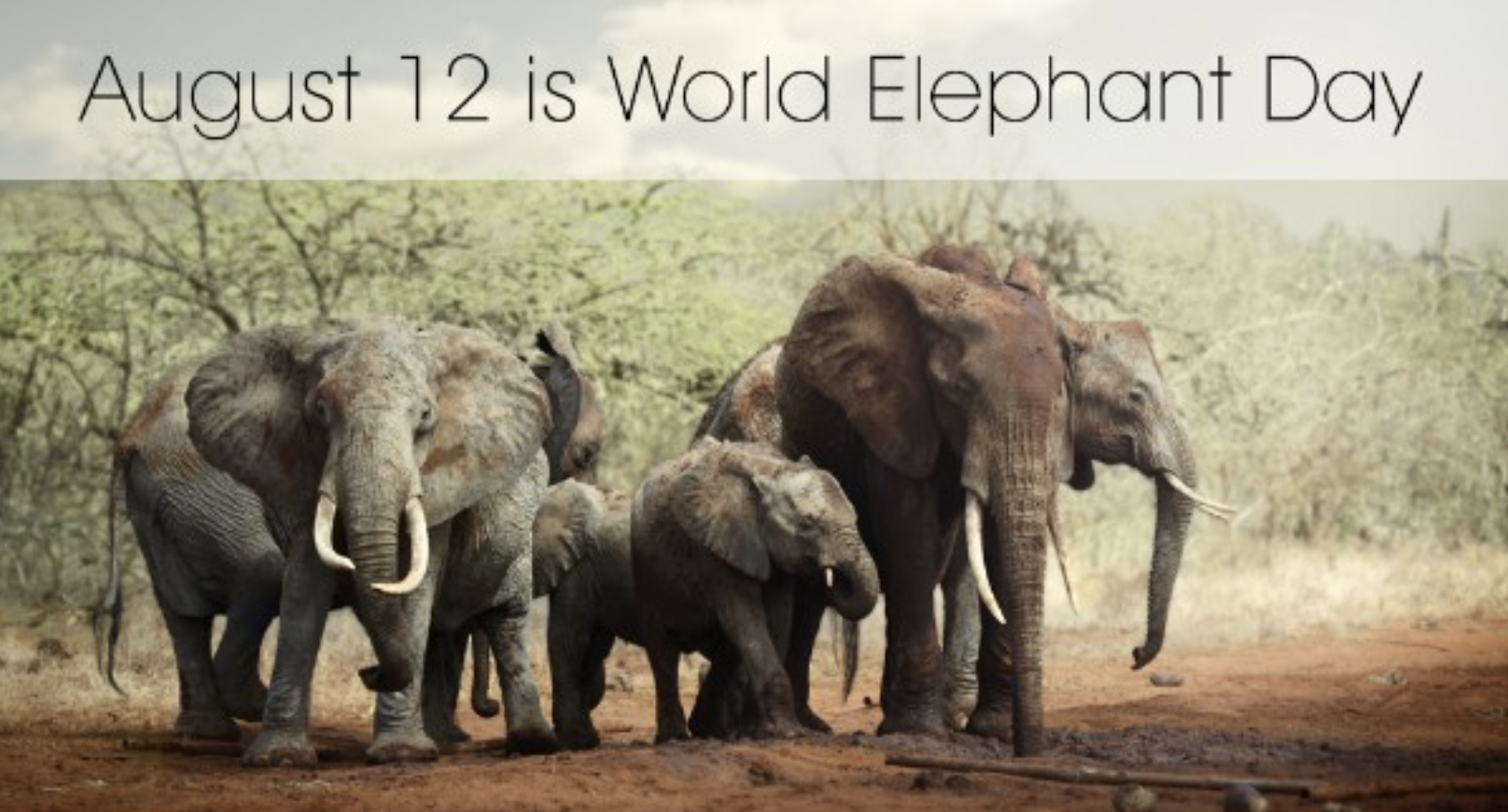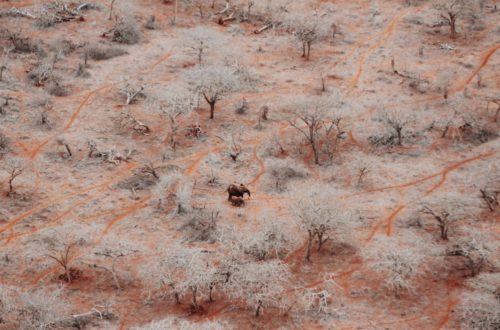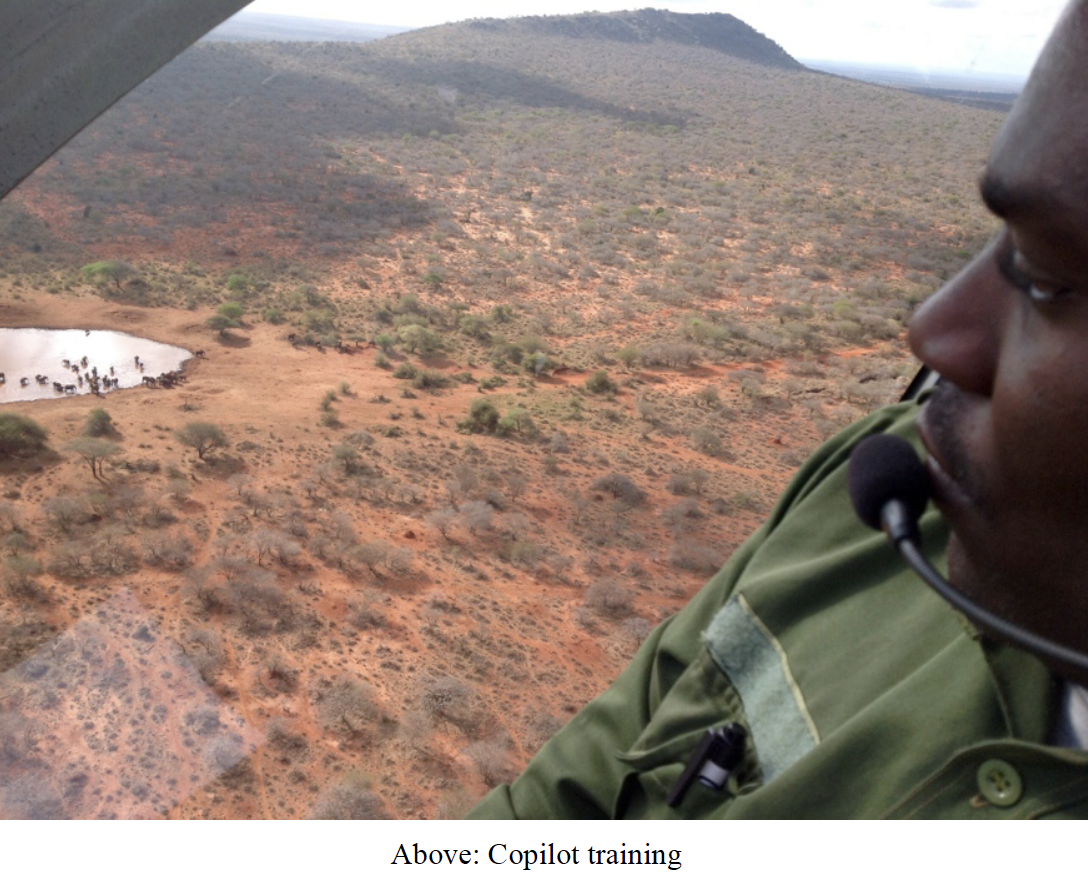
Kasigau Corridor Aerial Surveillance Annual Report: Jun 16 – Jun 17
By Keith Hellyer
Executive Summary:
The objective of the Kasigau Corridor Aerial Surveillance project is to increase aerial support for improved anti-poaching measures in order to protect Tsavo’s elephants. Funding from the Elephant Crisis Fund has increased surveillance over the Kasigau Wildlife Corridor between Tsavo East and West and has supported Wildlife Works and KWS’ rangers on the ground in anti-poaching activities, locating elephant herds, discovering carcasses, assisting in rapid response events, increasing ranger security and help to curb other illegal activities.
From May/June 2016 to June 2017, due to the funding from the Save The Elephants / Elephant Crisis Fund grant, the team have flown for 657 hours over a distance of 56,730 kilometres. This has reduced security threats to both wildlife and wildlife habitat, increased ranger security, been a deterrent to other illegal activity, and allowed daily monitoring of elephant movements with quick response of ground teams to monitor elephant locations.
Overview:
Total hours flown: 657
Distance covered: 56,730km
Elephants Deaths:

Additionally there were 4 recorded elephant deaths from highway or train collisions adjacent to the project area.
Summary of conservation accomplishments:
The constant aerial surveillance of elephants within the Kasigau Corridor project area combined with the quick response of ground teams to monitor elephant locations has had a positive outcome for elephant protection and been a deterrent against illegal activities. Poaching within the project area over last year saw a low compared to previous years (see Chart 1) which is connected to the continuous operations for locating other illegal activities such as logging, charcoal production, cattle grazing and bush meat poaching.
Armed poaching was an issue throughout the entire ecosystem this year. Several KWS officers lost their lives through contact within the national park. Several cases of armed gangs entering the project area caused concern especially from August 2016 through to March 2017. After shots were fired the gangs would retreat almost immediately from the project as response from Wildlife Works rangers, KWS and conservation partners were immediate. The cooperation between organizations throughout the project area ensured that gangs would not hang around an area for a lengthy period of time.
The majority of the elephant deaths were during the height of the drought for the 2nd half of 2016. The largest killer of elephants and other wildlife this grant period was death from drought-related health complications combined with an increase in human wildlife conflict in community areas.

Many of the victims were young or weak individuals. However, there was a massive loss to the project when the largest resident elephant bull died of colon impact and constipation from the drought conditions. The drought also meant elephants needed to be treated from surviving conflicts with people. Arrow and spear wounds were the majority and a rescue of an orphaned elephant was also necessary from this busy dry period. The pure size and vegetation density of the project makes it impossible to patrol purely on the ground. If it was not for consistent aerial patrols by our gyrocopter the poaching outcome this year may have shown a different and more upsetting figure.
The map 1 shows the sightings of elephants in 2016 and 2017 from the gyrocopter, and demonstrates the need for aerial surveillance in areas where road infrastructure is poor.
The aerial patrols have also allowed the team to identify a wealth of animal biodiversity throughout the area surveyed as well as collecting data on high conservation value species. Please see Appendix 1 for a chart of high conservation value species.
Other Poaching Activity:
For the last months of 2016 it was difficult to conclude weather an animal died of drought or was weak and poached. Several buffalo and zebra carcasses were found harvested by people for meat but some cases were not clear if the animals were alive when the harvesting started.
Bush meat arrests: 16
Charcoal and Illegal Logging:
The drought was a major influence on the charcoal production in the area. The long dry periods saw large spikes of activity throughout the project, mainly on eastern and southern ranches. Some spikes saw a overwhelming amount of illegal harvesting of wood and charcoal production, with problem areas being located but not always attended to because of the ground teams’ heavy workload. There has been an ever more evident connection between charcoal production and bush meat poaching within the area. Many snares recovered by rangers were located next to charcoal and logging locations. This proves that efforts need to be made to ensure that all illegal activities need to be addressed in order to protect elephant and other wildlife.
Please see Appendix 2 for a map of incidents across the surveyed area.
Issues Faced and Recommendations for the Future: The 1,000-hour heavy service was conducted in June 2016, which grounded the aircraft for 8 days. The replacement of the gearbox in August 2016 also grounded the aircraft for 7 days and was a heavy expense. An unknown vibration in the aircraft at the end of 2016 grounded the plane for the majority of December. Parts sent to South Africa for repair failed to rectify the problem, so a technician was organized to solve the issue.
Communication has been difficult at times with operations throughout the funding period. A lack of charging stations in the field with mobile teams and camps has made real-time reporting a major obstacle. Phone connection and air to ground vehicle radios have been the real savior.
Unfortunately on many cases, the air team would have to leave a problem sighting in order to get a report to the ranger teams. With new charging stations for field teams this issue should be rectified. Real time communication with ground teams makes a huge impact on how operations are conducted and when security threats are located.

Training Accomplishments:
Flights were conducted with Simon Kipsang, a Wildlife Works ranger, who has copiloted with the aerial surveillance team for over 3 years. He has earned over 1,330 hours as co-pilot for the gyrocopter, with over 500 of those during the funding
period. This experience has led to him being now arguably one of the best wildlife aerial spotters and data recorders in this field.
Daniel Zuma, a bright member of our local community (who was sponsored by Wildlife Works to undertake a degree in aeronautical engineering) recently graduated and has actively worked on the Magni Gyrocopter with its Rotax engine. During the funding period, he has learned how to perform 1,000 and 1,500-hour gyrocopter service requirements under the supervision of South African technicians (with previously having worked on the 500-hour service). He is the only Kenyan who knows how to conduct these services on this type of aircraft. He has recently been sponsored by crowdfunding to learn to fly gyrocopters in the U.K with the goal being for him to help with our aerial surveillance. He is currently performing several hours as a copilot before he goes for his formal training, and the goal is to continue building his hours as a copilot after his training.
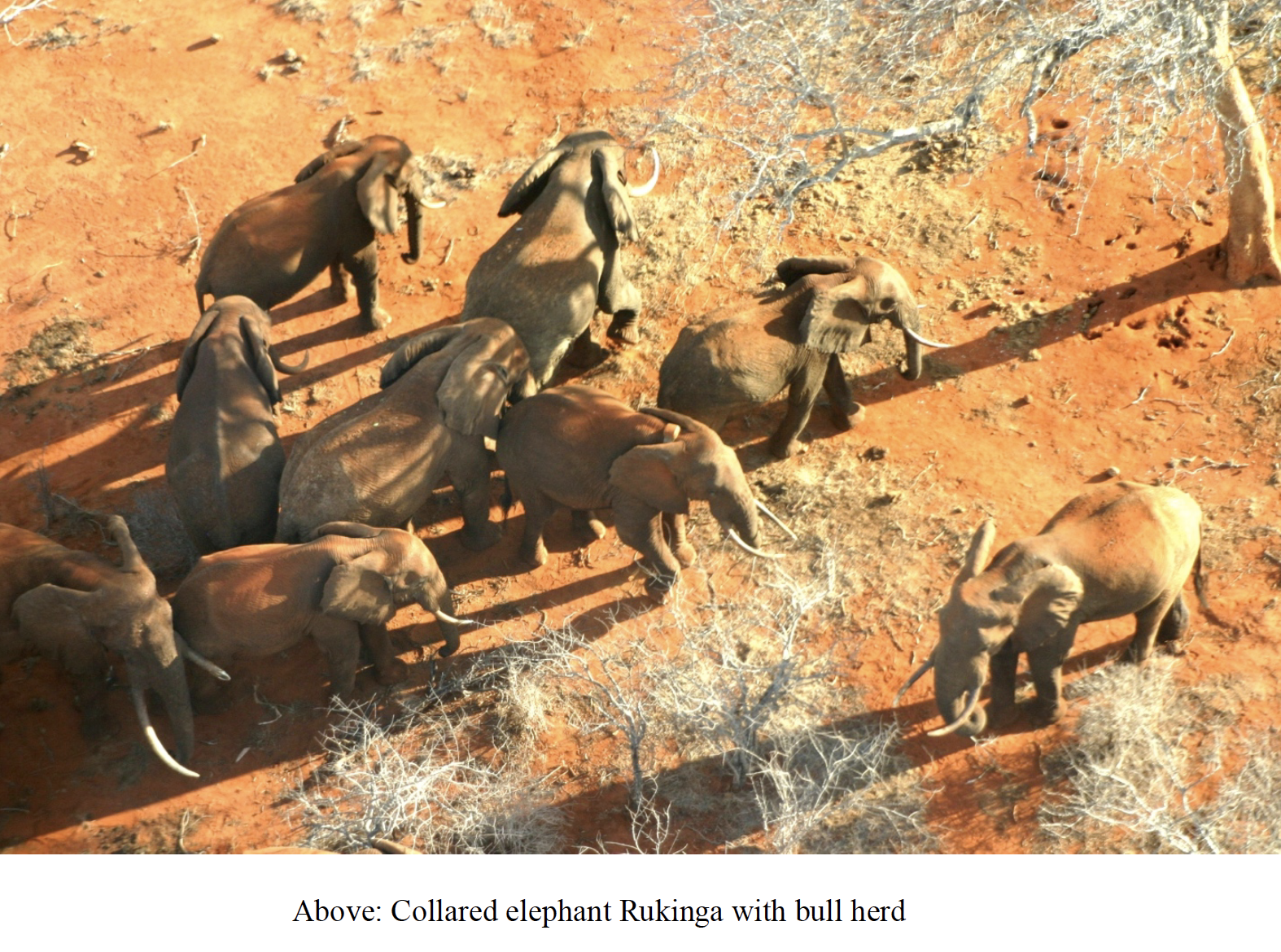 During the last year the aerial team, together with the Wildlife Works rangers, was able to learn more advanced tactical and pursuit training from the Dutch based ranger-training organization ‘Ranger Campus’. This training has helped with new methods for responding to armed incidents and handling fresh crime scenes such as elephant carcasses, including clear communication between air and ground teams.
During the last year the aerial team, together with the Wildlife Works rangers, was able to learn more advanced tactical and pursuit training from the Dutch based ranger-training organization ‘Ranger Campus’. This training has helped with new methods for responding to armed incidents and handling fresh crime scenes such as elephant carcasses, including clear communication between air and ground teams.
Reporting to other Organizations:
Daily reporting to the Kenya Wildlife Service is the first priority for the aerial surveillance team.
The daily documentation of elephant details and reporting of locations is in the best interest of all parties involved. Security information is also shared between other key organizations within the ecosystem, including KWS, Tsavo Trust, The David Sheldrick Wildlife Trust, Kenya Forestry Service and the Kenya Police department.
To assist the Save the Elephants branch ‘Elephants and Bees Project’, the aerial team provided informal updates about advancing elephant herds on local farms, collared elephant information and taking researchers for patrols around their project area.
Publicity:
By using our very unique aircraft, interest has been sparked in the international gyrocopter community. This has had a positive effect with equipment being donated by interested members of the gyrocopter enthusiast community. Generous donations included air to ground radios containing a vehicle base radio, as well as new aircraft seats and camera equipment.

